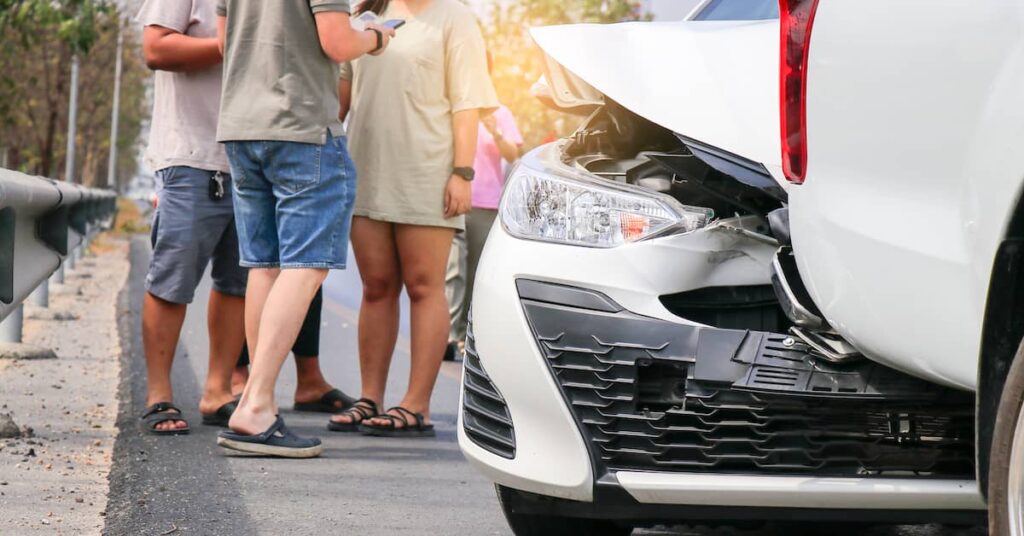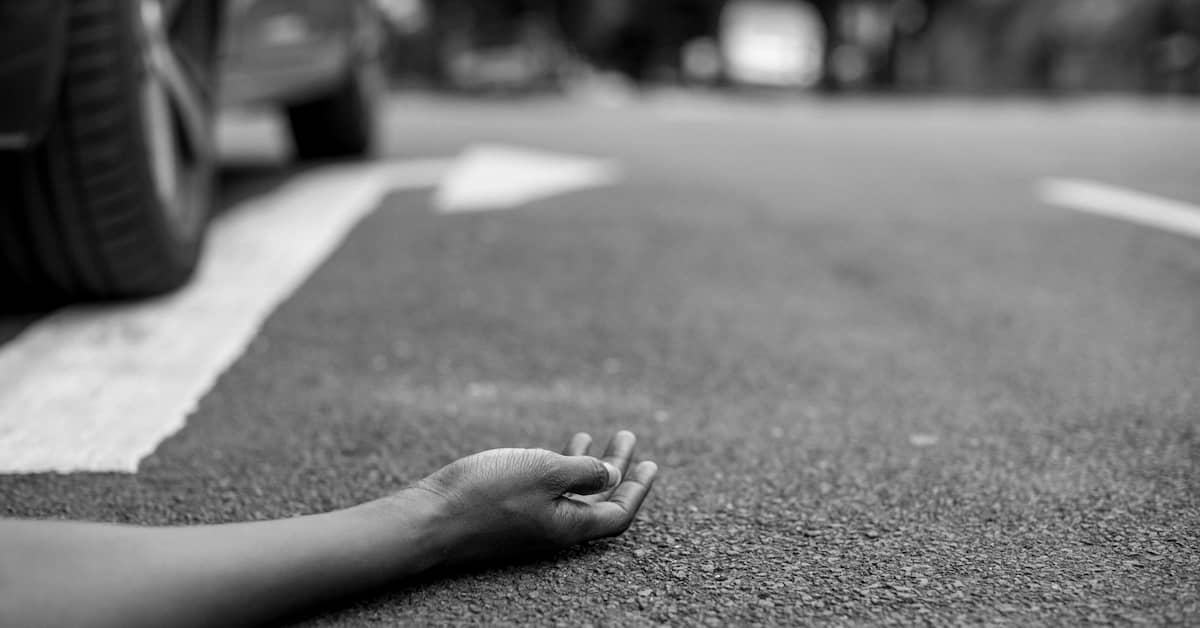
What Is the Rear-End Collision Law in Nevada?
Rear-end collisions are among the most prevalent types of automobile accidents in the United States. They accounted for 32.5% of motor vehicle crashes in 2019, per the NHTSA’s Traffic Safety Facts. Las Vegas is no exception. The bustling streets, frequented by residents and tourists, witness many of these incidents.
While the aftermath of such accidents can range from mild discomfort to severe or even fatal injuries, understanding Nevada’s rear-end collision law is crucial for all parties involved. Knowledge of the law and the legal process after an accident could be instrumental in the pursuit of the compensation you deserve after a car accident.
If you have been injured in a rear-end collision, a car accident lawyer can help you pursue fair compensation. The attorneys at Burg Simpson can help you navigate the intricacies and challenges of your claim. Call 702-668-2070 today for a FREE and confidential case evaluation.
Who Is Usually At Fault in a Rear-End Collision?
A rear-end collision occurs when one motor vehicle crashes into the rear of another. In Nevada, liability in rear-end collisions is generally presumed to lie with the driver who struck the vehicle from behind. The rationale behind this presumption is that drivers are expected to maintain a “reasonable and prudent” following distance from the vehicle in front of them, as outlined in the Nevada Revised Statutes (NRS) § 484B.127.
What constitutes an adequate distance between vehicles? The answer varies based on several factors. Considerations include the speeds of surrounding vehicles, current traffic volume, weather conditions, and the types of vehicles involved. All these elements play a role in determining a safe following distance.
There are instances where the driver of the front vehicle could be held partially or fully responsible, especially if they acted negligently. For example, if a vehicle’s brake lights are malfunctioning or if the driver suddenly reverses without warning, they could bear some responsibility for the collision.
Read More: Why Are There So Many Car Accidents in Las Vegas?
What Is Modified Comparative Negligence?
Nevada operates under a modified comparative negligence rule as stipulated in NRS § 41.141. This means that even if you are partly at fault in a rear-end collision, you can still recover damages. However, your compensation will be reduced by the percentage of your fault. For instance, if you are found to be 10% at fault in an accident and your damages total $20,000, you will only recover $18,000.
If you are found to be 51% or more at fault, you will not be able to recover any damages. Therefore, while a driver who rear-ends another vehicle is often considered at fault, the circumstances surrounding the accident can adjust that liability and, thus, your compensation.
What Evidence Is Needed to Establish Fault?
Given Nevada’s modified comparative negligence law, proving fault in a rear-end collision can sometimes be complex. Evidence plays a crucial role. This might include:
- Eyewitness Testimony
Bystanders or other drivers can provide accounts of what transpired. - Police Reports
If there is an injury, death, or significant property damage ($750 or more) related to the accident, law enforcement will need to be called. The police report will be valuable to your claim. Make sure to request a copy for your records through the Las Vegas Police Department or Nevada State Police Highway Patrol. - Vehicle Damage
The nature and extent of damage to both vehicles can indicate the force of the collision and, potentially, the at-fault party. - Traffic Camera Footage
In areas where cameras are operational, footage can offer potentially indisputable evidence.
What Are Common Injuries Resulting from a Rear-End Collision?
It is important to recognize the potential injuries rear-end collisions can cause. Common injuries resulting from a rear-end collision include:
- Whiplash
- Spinal cord injuries
- Concussions
- Neck & back injuries
- Head injuries
- Traumatic brain injuries
- Fractures
- Vertebral compression fractures
- Herniated disks
- Knee injuries
- Sprains & strains
- Spinal stenosis
What Is the Statute of Limitations on a Rear-End Collision Claim in Nevada?
If you or a loved one has been involved in a rear-end collision in Nevada, it is critical to be aware of the period of limitation. According to NRS § 11.190(4)(e), victims typically have two years from the date of the accident to initiate a personal injury claim. For property damage claims, the duration extends to three years.
We always recommend acting swiftly after an accident and contacting a car accident attorney as soon as possible. Two years may seem like plenty of time, but so much will need to be accomplished.
There may be other deadlines, like filing a police report or a claim with the insurance company. Evidence will need to be collected in a timely fashion to ensure accuracy. In addition, there may need to be a process of negotiation with the insurance company before a fair settlement is arrived at or the decision to litigate is made.
What Damages Can Be Pursued in a Rear-End Collision Claim?
Victims of rear-end collisions in Nevada can seek various types of damages both economic and non-economic, including:
- Medical bills
- Lost wages
- Loss of earning capacity
- Permanent disability
- Scarring & disfigurement
- Pain & suffering
- Emotional distress
- Loss of consortium
- Loss of the enjoyment of life
- Property damage
In the case of a wrongful death in a rear-end collision, the loved ones of the victim may be able to recover damages including:
- Funeral & burial costs
- Loss of probable support & benefits
- Medical expenses (if applicable)
- Pain & suffering
- Loss of companionship, society, comfort, & consortium
- Loss of parental guidance
How Can a Las Vegas Car Accident Lawyer Help?
Given the complexities surrounding rear-end collisions, having experienced representation becomes invaluable. A skilled Las Vegas car accident lawyer can:
- Evaluate the case thoroughly, determining the potential for claims.
- Gather evidence to build a robust claim.
- Negotiate with insurance companies to ensure fair compensation.
- Represent the victim in court, if necessary, advocating for their rights and interests.
- Give guidance and support throughout the process—from start to finish.
Contact Burg Simpson Today
While Nevada law tends to attribute fault to the rear driver in a rear-end collision, the reality can be more intricate. Victims must act promptly, considering the statute of limitations, and ensure they have professional representation to navigate the legal intricacies and advocate for their rights.
For anyone involved in a rear-end collision in Las Vegas, consulting with a knowledgeable car accident lawyer is essential. The attorneys at Burg Simpson can provide guidance, assist with gathering evidence, and represent your best interests, ensuring you receive the compensation you deserve for the losses you have suffered.
Contact Burg Simpson for a FREE and confidential case evaluation. We are proud to serve our local community in Las Vegas and all of Nevada.






